Why the Difference?
The methods on the previous page will indeed work fine on metals too, especially if your sheet comes with a protecting wrapping on it. That's not always the case, however, and for metal there are some methods that you can use that really help. The primary bit of kit being this stuff, marking fluid, also known colloquially as engineer's blue.
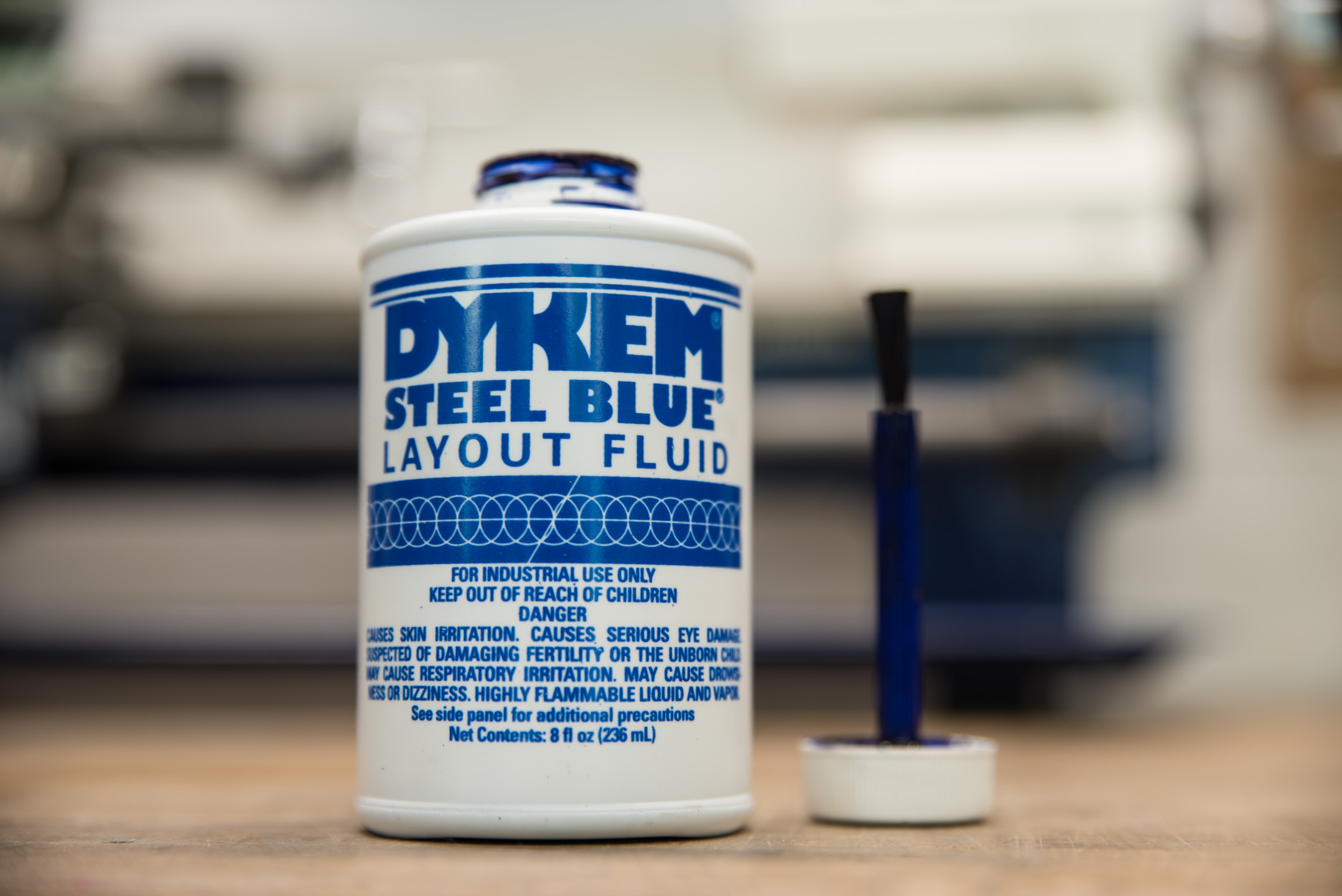
Now a word of warning: This stuff is toxic to the point that reading the warning list is actually quite comical. Always make sure you use it in a well ventilated space, and try not to spill it or get it on your skin. This stuff is essentially permanent marker ink in a bottle. Use the applicator brush to apply to the metal surface, score your marks, and then wipe off later with a solvent like acetone. Marking fluid is resistant to smudges and will survive a fair bit of handling, which makes it great for use with parts that may see a fair few processes applied to them.
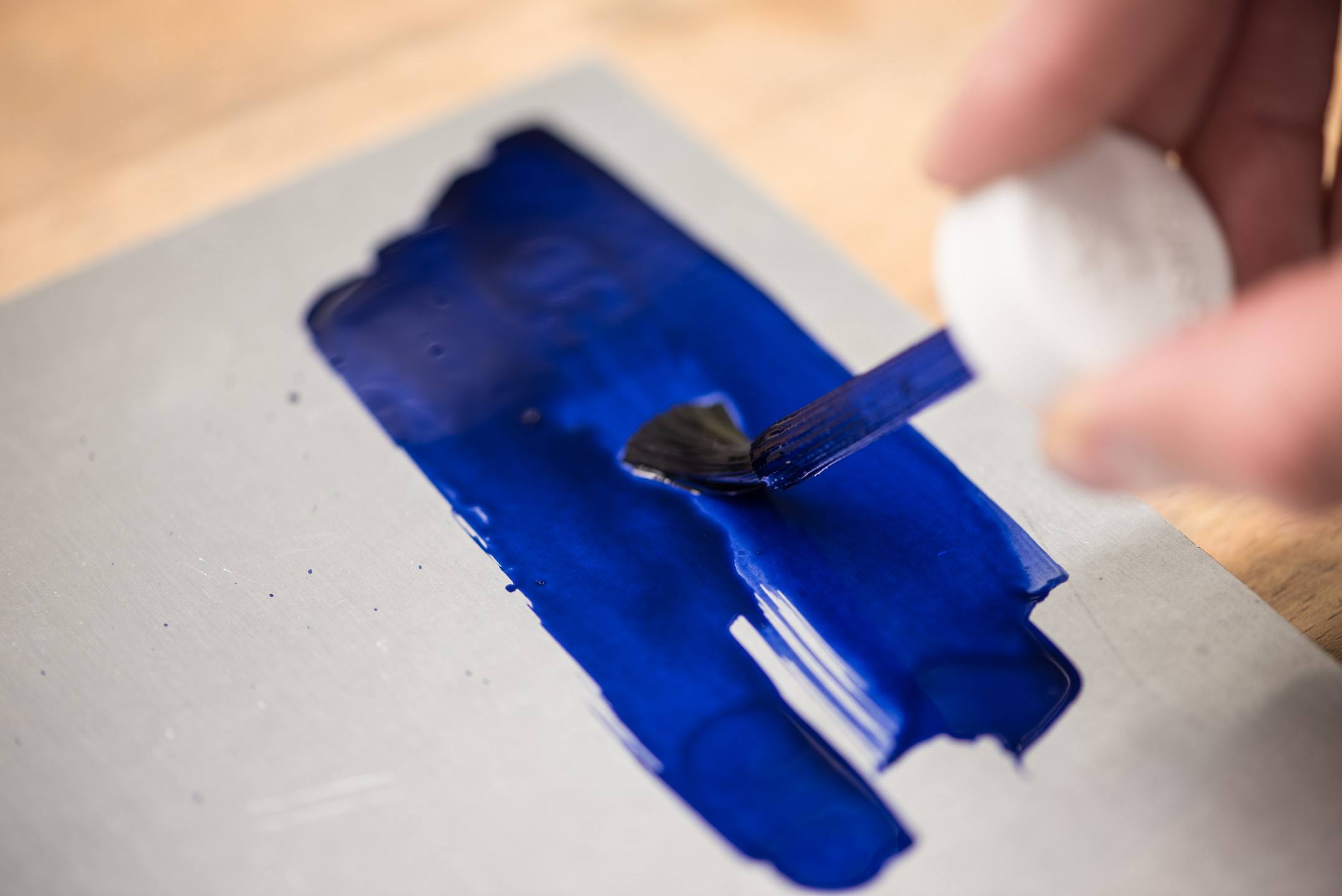
Tools for Metal
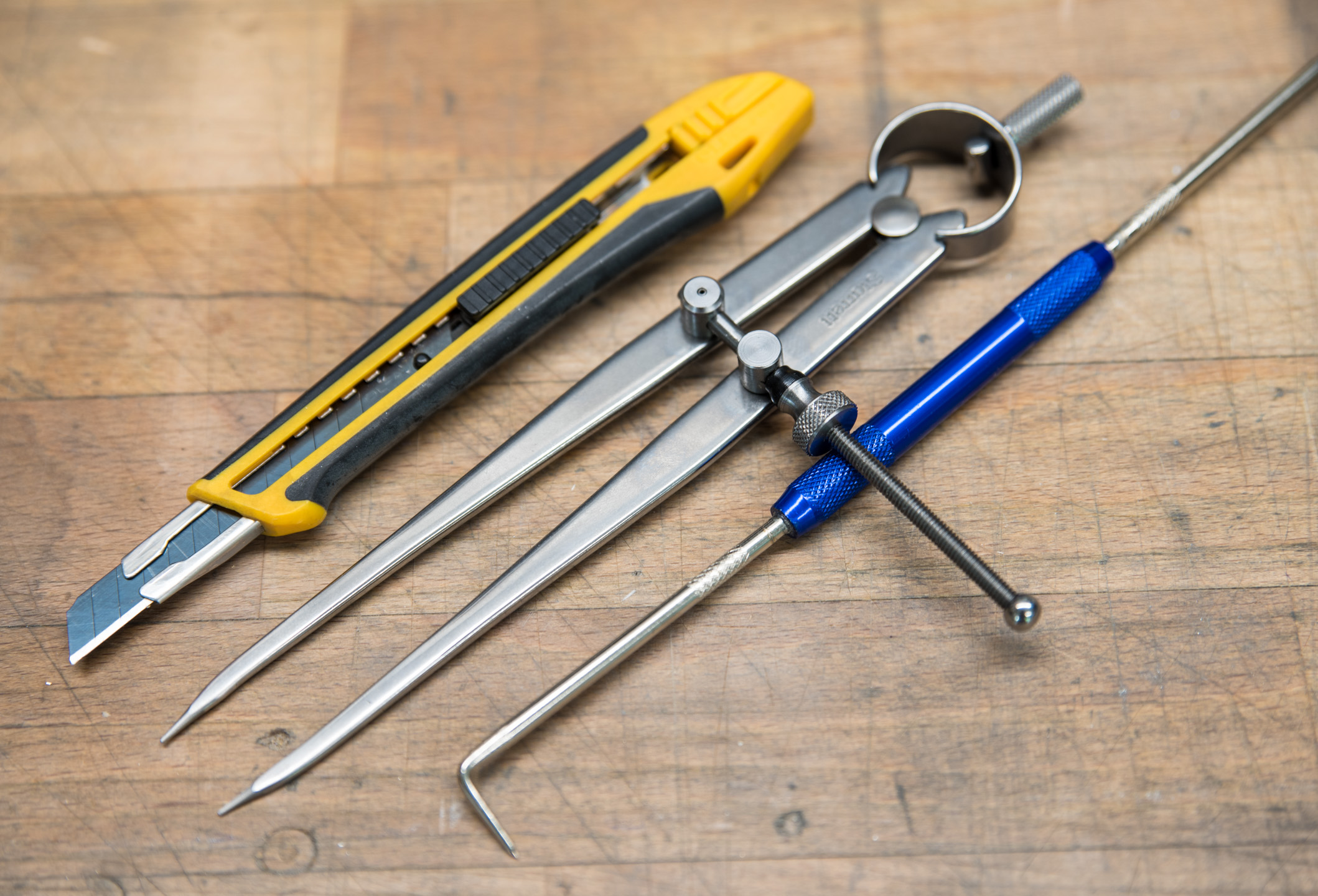
Marking fluid works almost inversely to how the previous devices work. Instead of it being the line, you cover the surface and then use a sharp tool such as a scriber, craft knife, or set of dividers to score the surface. This results in a very distinct, high contrast line that's very precise.
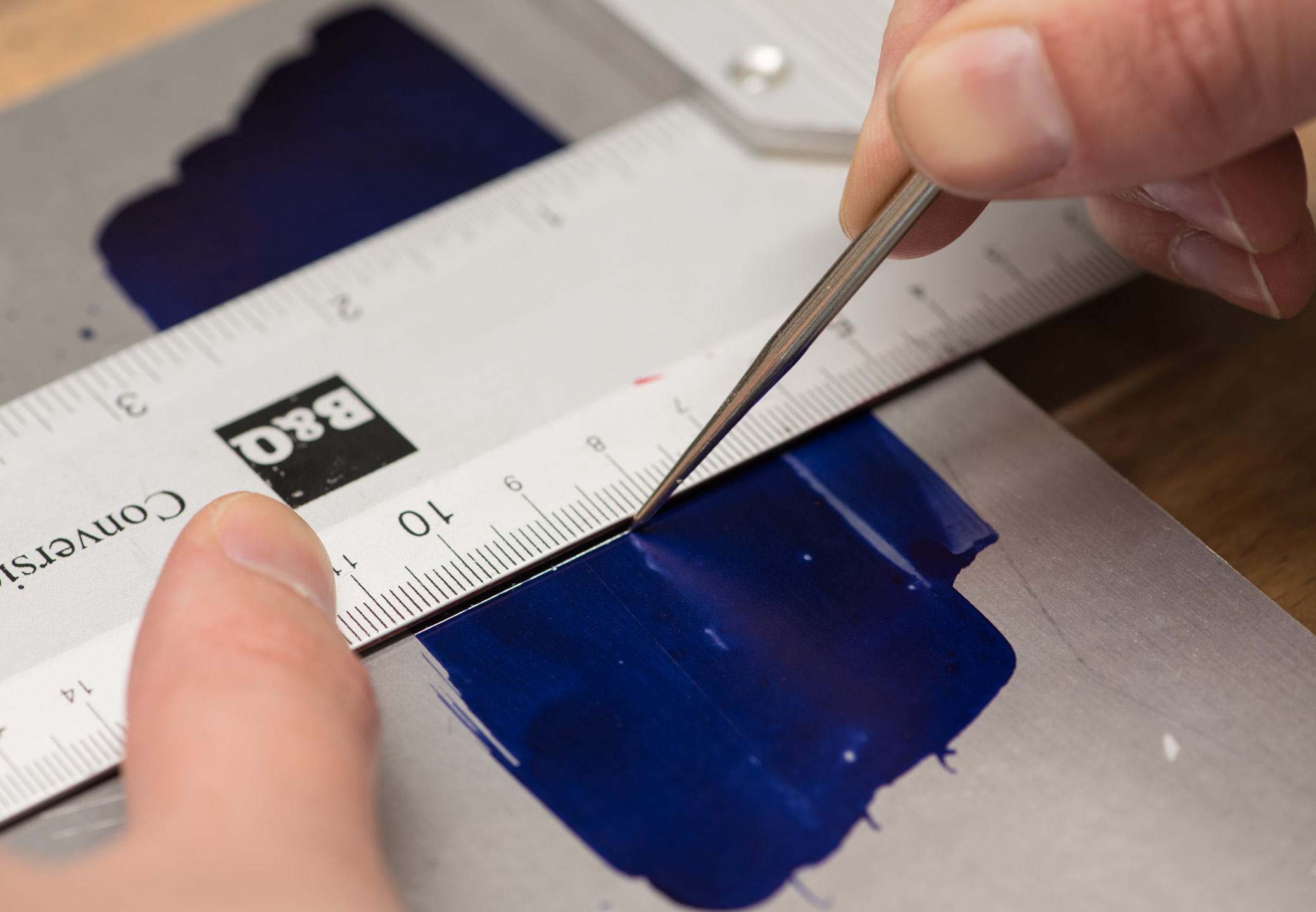
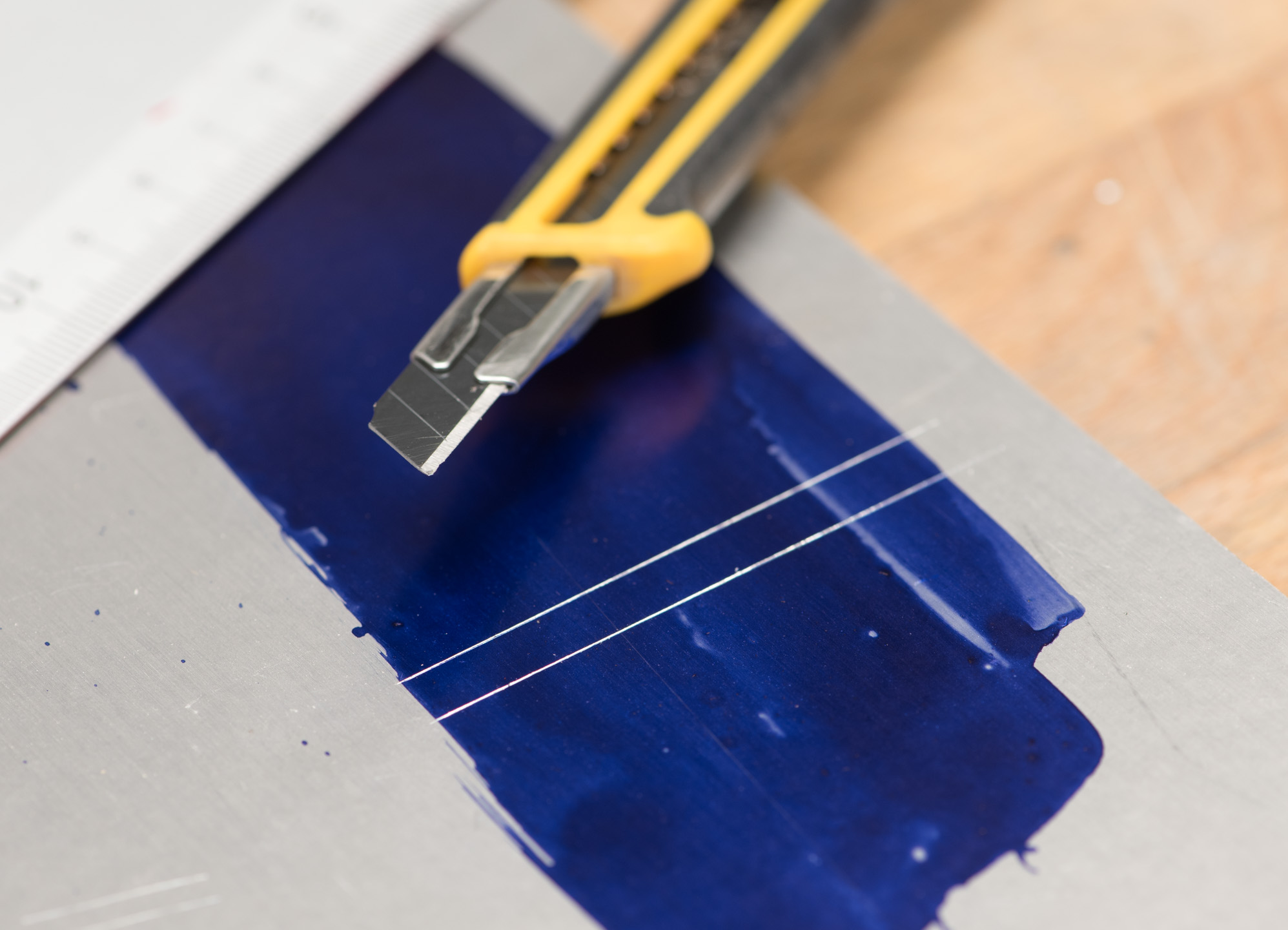
Dividers are a fantastic tool to have around. Whilst they look like a standard pair of compasses, having two sharp ends and a screw action means they can be very accurate. Naturally the first use for them is with drawing circles and arcs, which is the same process as a pair of compasses on paper. Where they differ is that with metal you're not limited to using them like that. In fact they're brilliant tools for drawing parallel lines, drag one end along a straight edge and you can have wonderfully parallel runs with consistent spacing. Apply a bit of school geometry and you can construct quite complex shapes and intersections using them and a rule.
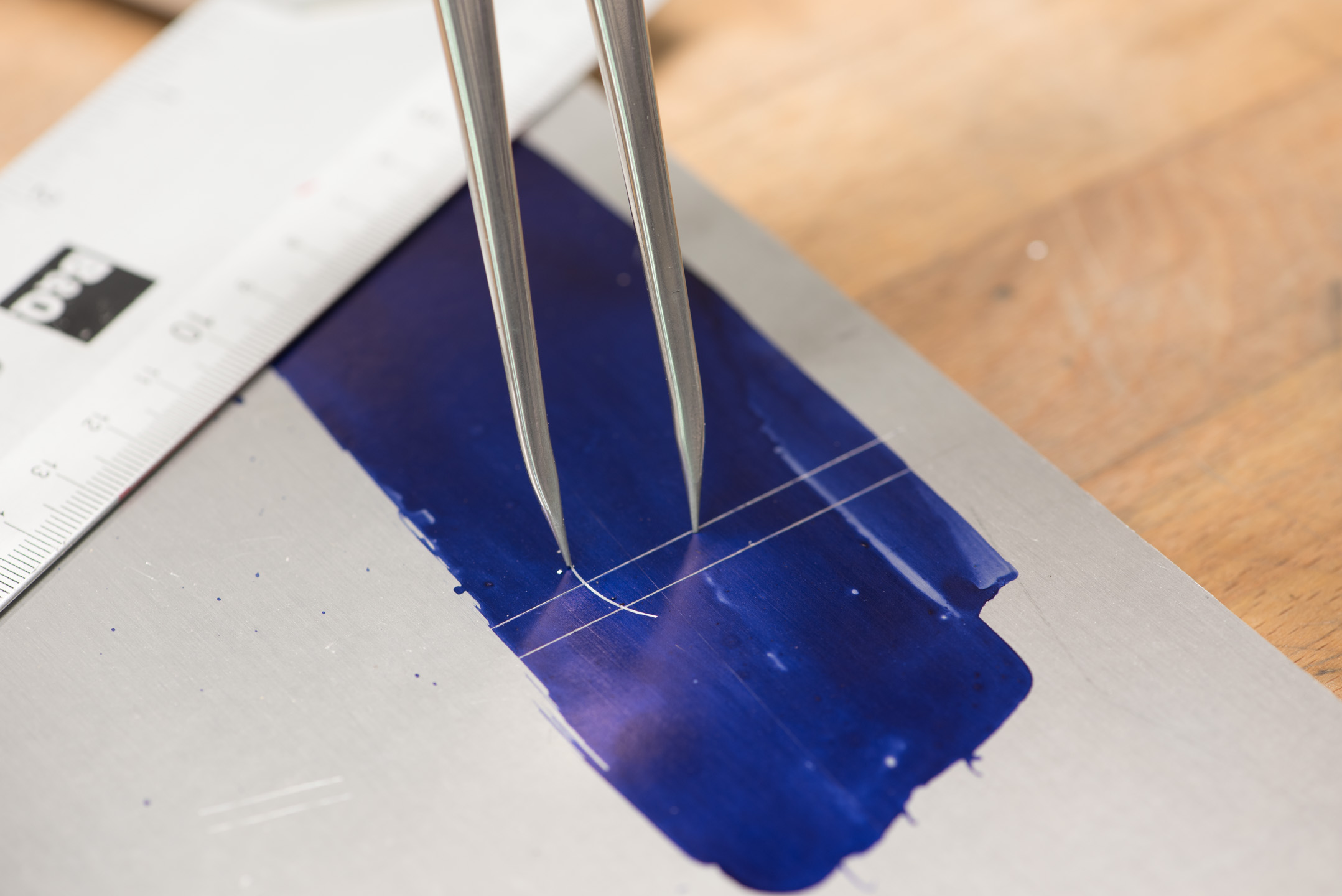
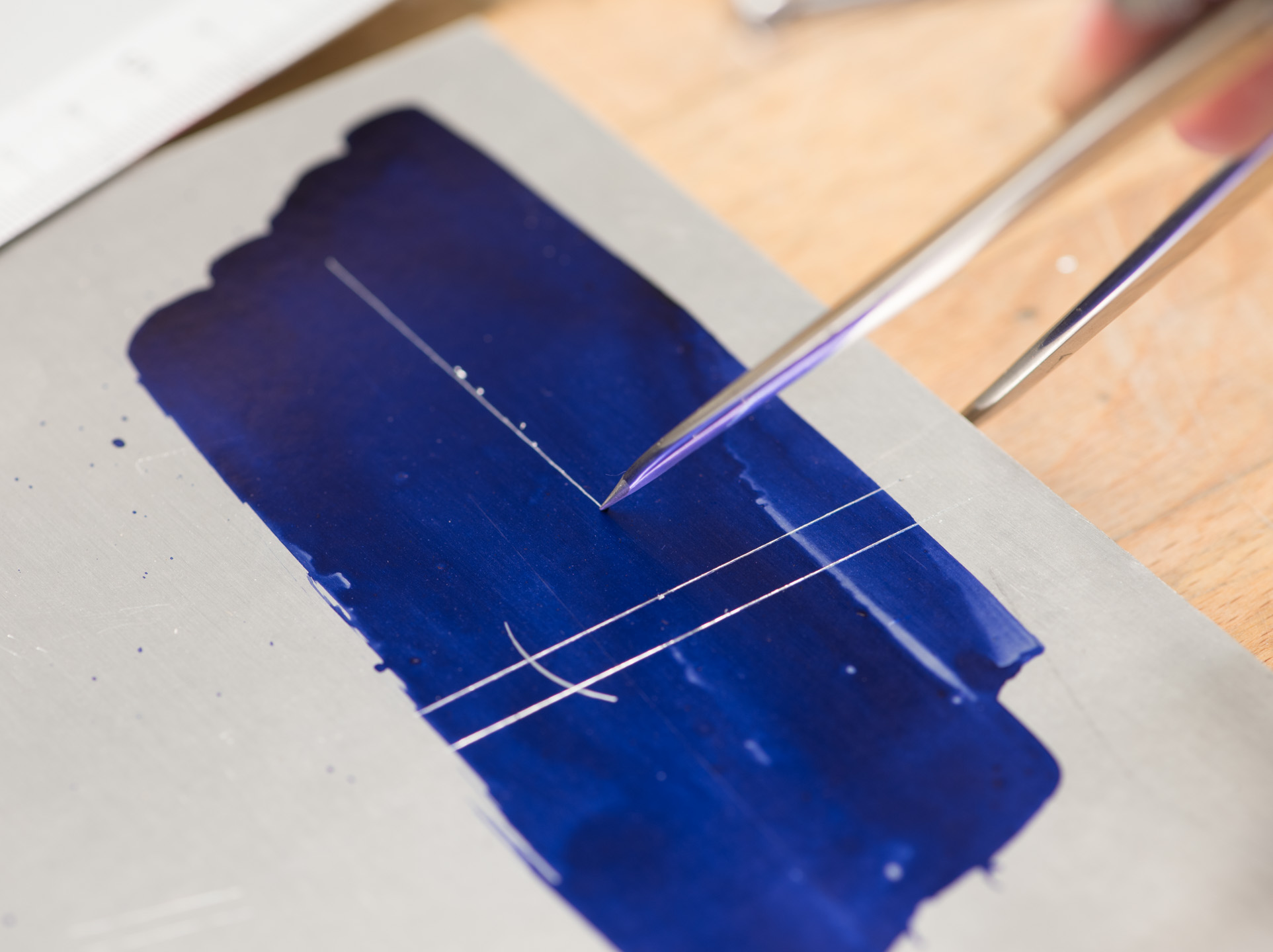
Don't Stop Here
As I mentioned at the beginning, this is just an entry point into this domain. I've purposely omitted lots of drawing aides, jigs etc. because they're so specific, and the list would just drag on and on. If you find yourself needing to draw lots of a particular sort of shape, consider picking up a jig for it or a specific tool (such as bevel markers, protractors etc.) that will help you do it quickly and easily in the future.
Much of marking up is about being logical. Measuring from consistent points and reducing your accumulated inaccuracies will go a very long way!

MSI MPG Velox 100R Chassis Review
October 14 2021 | 15:04

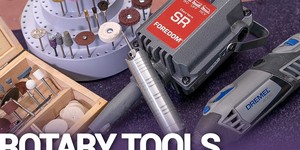






Want to comment? Please log in.